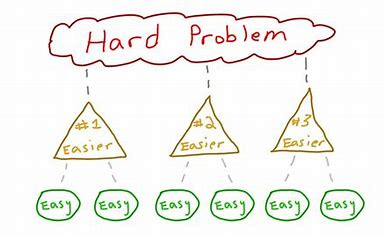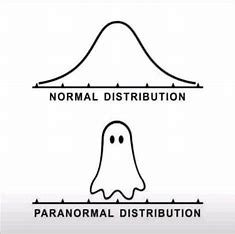Data, Data Everywhere, but Not an Outcome in Sight
More data will be no superpower any more, a data-driven mindset could absolutely be
Custom data is the only true leverage but only when wielded with the right mindset.
A client once showed me their proprietary customer database, convinced it was their secret weapon. My job as a consultant? Magically turn their “unique data” into AI gold.
I’ve seen this panic pattern before, and I am sure I will see it again. Why does it matter though?
In today’s AI goldrush of hype and improvised SaaS products mushrooming up everywhere, “we have unique data” has become a self-soothing mantra. A way to say that “we’re not behind, we’re sitting on a goldmine.”
Except… they’re likely not. Not if they continue doing nothing with it.
That data had been sitting untouched for years. No strategy. No system. Just raw potential gathering dust.
After years in academia, tech, and consulting, one thing is clear to me: it’s not the tools or the tech that give you leverage. It’s how you think at the fundamental level.
Data thinking isn’t about writing code or holding a PhD. It’s about working with structure, asking better questions, and refusing to guess in the face of complexity.
And it’s a mindset anyone can train. And in the AI madness, probably should!
Whether you're building a product, running a team, designing systems, or just tired of flying blind, data-driven thinking might be your sharpest tool.
I’ve seen this mindset shift transform individuals and teams. Not in theory. Not from textbooks. But in practice, coaching real people who learned to treat data like a muscle: something to train and make stronger, not fear.
So the question I keep returning to is: What does it actually mean to think like a data scientist?
And what shifts when you do?
Forget the Answer, Look For the Question
In today’s tech-saturated world, the right answer is cheap. The right question is rare.
That’s where the real leverage lives, not so much in knowing how to query a database or tweak a model, but in knowing what’s worth asking in the first place.
For a person with a hammer, the whole world is a nail. You have to ask the questions worth answering!

The real work starts when you move backward from messy data, half-baked ideas, or gut instinct toward sharper, clear questions. It’s not just a tactic, it’s the shift we are going for. The only one that matters now.
And most people haven’t caught up yet.
Back at university, we were told not to ask “leading questions.” Curiosity had to behave. But in the “real world”? Speed matters!
The faster you surface better questions, the faster you find signal in the noise. Because if you don’t know what to ask, you’re not ready for an answer.
So here is how this looks on the job, I’ll go first.
When I’m deep in a dataset or scoping a project, I’m not chasing insights. I’m chasing the question that unlocks them: what does the client really want to know? In materials science, that often means digging for chemical or molecular traits no one’s spotted yet.
In your world, the patterns will differ. And so will the insights.
But the habit? It’s the same. Focus on what you really want to know.
Let the Data Shape Your Instincts
Gut instinct can be powerful but only when battle-tested.
We all know that feeling, a hunch that something’s off. A flash of intuition that turns out to be right in hindsight but we ignore it, second-guess it, or never check it at all. But our intuition is only as good as the feedback we feed it.
It’s not wishful thinking, it’s the core of good judgment.
In data science, this is the loop: spot a pattern, form a hypothesis, test, refine.
But outside of the dashboard, most people skip the tests. They guess. They bet the company on it. Then they call it strategy gone wrong!

I’ve A/B tested two versions of my own work and career, working as an employee vs. contractor. One rewarded polished decks. The other demanded real results. Guess which made my instincts sharper?
Gut instinct isn’t the enemy. But until it’s shaped by signal, it’s just guesswork.
Train it. Test it. Let data punch holes in your certainty, and turn belief into true leverage.
I help people break through career ruts and start monetizing their skills. If you're ready to move from stuck to sold, let's talk here.
Start Small and Think Sharp
“Break the problem down” is not novel advice, I get it. But boy, does it get ignored?
People stall not because we’re lazy but staring into the fog can be intense. Seeing the first step is hard if you only look for the whole staircase. Big problems don’t kill progress, vague and unclear ones do.
So just break it down. As well as you can, right now. And there, clarity begins.
In my first data science role after university, it was reality check time. The fast movers weren’t the smartest ever. They just knew how to slice the problem and iterate quickly, no drama!

In data science, feature engineering? In life, critical thinking? Doesn’t feel critical enough though.
Chunk it down and see what works. Break the fog into fragments. But do it almost out of reflex and soon, there will be order in the chaos.
Let us look at an example question: “why isn’t my data science career taking off?”
Very hard to say. Too blurry and too vague. Apart from being an abstract question, hitting the wall answering that is all but inevitable.
Instead, here how I would break it down: What is the problem I want to solve?
Is this problem valuable enough? Next up: whether I am shipping output or outcome. Does it influence any decisions?
Then there’s the kicker: visibility. Are you being seen?
The answers still don’t follow magically, it definitely requires introspection. In the words of Lewis Carroll though, “If you don't know where you are going, any road will take you there”.
Master Pattern Hunting
Data science at its core, in a single line: spot patterns and structure in the data, and predict what comes next.
You can train your brain to do this. Start by observing closely and look for trends. Test your instincts next and ground your decisions in what the data says and shows.

On my mind right now is writing on Substack because yep, I’m getting started seriously here. And yikes, the noise is real.
What patterns could actually matter? Look at what consistently resonates. See what people respond to. Notice what flops, and ask why (and yes, please feel free to tell me).
Data to insight to instinct. Let’s make it reflex, no ritual.
Think in Experiments, Not Endgames
Waiting for the “perfect” next move? Yeah, me too and it is always going to be the move that comes next.
In data science, nothing works on the first try. For me, at least.
And that’s the point. You test a theory, get a signal, adjust your aim and move on. Life’s a lab, let’s deal with it! Every flop teaches you what not to do next.
Progress isn’t linear. But here’s what is also true: patterns emerge if you look closely enough. And long enough.
Test. Learn. Repeat. That’s the whole game.
TLDR: Train the Mind, Not Just the Algorithm
Here is your “what did I miss because it was all too boring?” snapshot:
Ask smart questions first, the answers will follow
Instincts and data-driven insights go hand-in-hand
Break down problems into smaller pieces
Patterns exist if you look hard enough: find them and learn from them
Experiment, iterate, and embrace failure: not that you have a choice. But do it consciously.
Data-driven thinking isn’t just a skillset, it’s a way of seeing. Where has this mindset worked for you? Let me know in the comments.
I help people break through career ruts and start monetizing their skills. If you're ready to move from stuck to sold, let's talk here.


